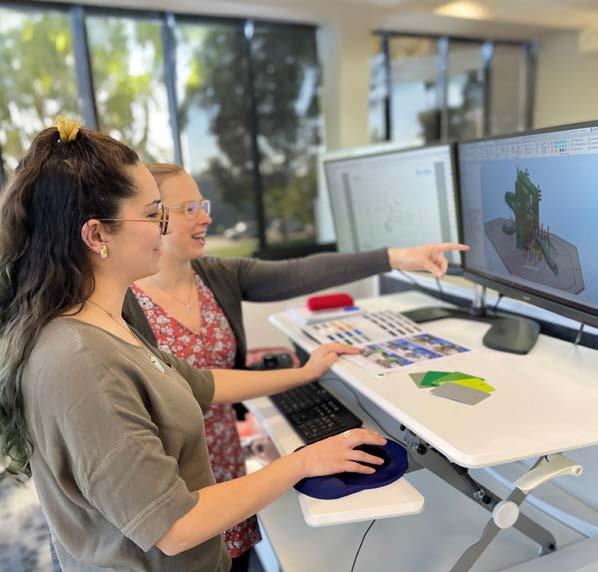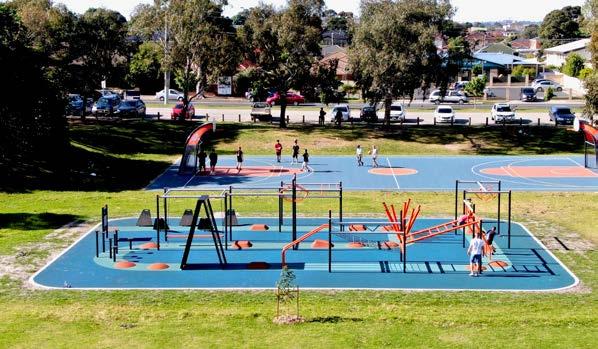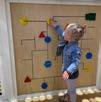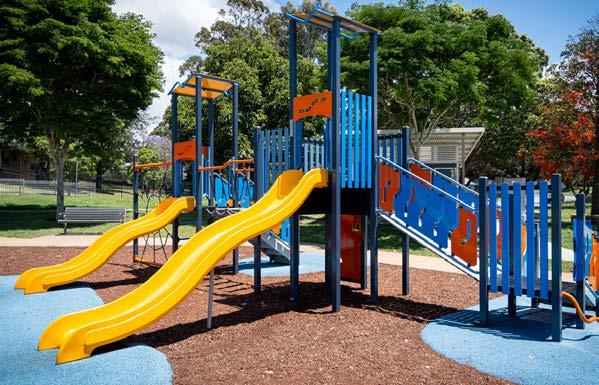







As educators, administrators, and community leaders, the importance of providing students with a dynamic and engaging outdoor environment cannot be overstated. A well-designed school playground goes beyond physical activity, it becomes a catalyst for learning, wellbeing, social development, and school pride.
Whether you’re a School Business Administrator, Principal or member of a P&C Committee, this guide offers a step-by-step approach to planning your next school playground. From defining your vision to managing safety and compliance, we’ll help you plan with clarity, purpose, and confidence.

PlayCo is a collective of leading Australian playground specialists. With 5 factories across Australia, we bring together an unsurpassed range of Australian-made commercial equipment and a nation-wide network of play experts, delivering a seamless end-to-end experience.
We work closely with Australian schools to design playgrounds that meet the needs of their students and communities. Whether you’re in the early planning stages or ready to brief suppliers, we can guide you through every step of the process—from concept design and compliance to install and aftercare.





Playgrounds are a whole-school asset, and planning should be collaborative. Your team might include:
• A planning coordinator
• A landscape architect or designer
• The Principal
• School Council or P&C representatives
• Teachers
• Student Committee

Great playgrounds start with listening. Engaging your school community early ensures your space meets real needs and builds support for your project.
These key questions can guide every consultation:
What experiences do you want students to have during play?
What features or activities do you think students would love most?
Teachers
What types of play should the new space encourage (e.g. active, social, creative, quiet)?
What would make this playground feel unique or meaningful for your school?
Understand school priorities, supervision needs, programming, and school-wide strategies. Think about how play areas can support existing initiatives or address gaps—such as inclusive play, safer supervision zones, or culturally responsive design.
Gather insights on how students play, key age group needs, and any safety or behaviour issues tied to the space. Teachers may also offer ideas for how the playground can support learning goals.
Students
Students are the ultimate experts. Tailor your approach by age:
• Prep–Year 2: Ask students to draw their favourite play areas and what they wish they had.
• Years 3–4: Use simple surveys to explore how they currently play and what they’d like to see.
• Years 5–6: Involve them in design discussions. Ask what makes a great playground, what they’d improve, and what they feel is missing.
Parents
Share a quick survey via the school newsletter or host a workshop to gather ideas. Include openended prompts so parents can raise needs or concerns you may not have considered.

1. 2. 3. 4. Tip
Walk the space with students, ask them guide you through the play routines and then ask what they would like. Keep in mind:
• Every child will value different things. Something that seems minor to an adult may be hugely important to a child.
• Give children options and ask them to choose what they would prefer.
• Encourge children to be inclusive, ask them what others like, too.

Ask: What are you hoping to achieve with your new playground?
Stimulate creativity and imagination? Encourage physical activity? Support inclusive play?
Promote social interaction?
Think about whether you want themed play areas, nature play elements, or fitness-focused zones. Now that you’ve gathered insights from teachers, students, and parents, let those insights guide your answers to these questions. A clear vision will help your supplier align the design with your goals.
Also, define your timeframe. Are you planning to complete the upgrade in one stage, or spread it over several years?
Playgrounds can range from $20,000 to $200,000+ depending on the size, site, surfacing, and features.
Key tips:
• Establish a realistic budget early
• Be transparent with your supplier about financial constraints
• Consider all project costs: site preparation, equipment, surfacing, landscaping, and installation
• Look into grants, fundraising, and P&C contributions
Start with a comprehensive site review:
• Measure open space and take note of any hazards or boundaries
• Assess sun angles, drainage, existing vegetation, and slope
• Identify underground services or overhead obstructions
• Check pedestrian flow during pick-up/drop-off
• Consider after-hours use, access for emergency vehicles, and nearby neighbours
You should also:
• Conduct a safety audit of any existing equipment
• Check for asbestos or soil contamination if the area hasn’t been developed before
• Map current and future parking or access needs
An overall site plan will help you anticipate challenges and guide informed decision-making. A qualified play provider can assist with this process, bringing experience in identifying site constraints and opportunities.
Different age groups have different development needs:

Early years:
Ground-level play, imaginative elements, sensory features

Primary: Slides, swings, climbers, inclusive elements
Also factor in the number of students expected to use the playground at once. This influences size, layout, and flow.
Consider:
• PE programs and how the space will be used in curriculum
• School policies or government guidelines that influence play

Senior: Agility courses, fitness tracks, social gathering spaces
• The demographic profile of your local area to help future-proof your planning
More schools are incorporating fitness-based play. For example:
Primary schools often prefer activity circuits, balancing tracks, and junior ninja courses
Secondary schools are more likely to opt for outdoor gym or full-scale ninja courses.
If your students need a space for movement and challenge, talk to your supplier about age-appropriate options.
Portable play equipment can also be a smart addition, offering flexibility, variety, and the ability to tailor activities to different groups.
Inclusive playgrounds provide equitable play for all children. Key features include:
• Wheelchair-accessible pathways and ramps
• Multi-sensory play equipment
• Spaces designed for both active and quiet play
Make sure your supplier includes inclusive design principles and checks alignment with current accessibility standards.
Also consider:
• Sensory-friendly design for neurodivergent children
• Zones for social play, rest, and retreat
Work with a certified school playground designer or supplier who:
• Understands Australian Standards (AS 4685 series)
• Offers compliant and durable equipment
• Can provide layout drawings, cost estimates, and design advice
A good supplier will walk beside you from first sketch to finished space, including installation, inspections, and ongoing support.

As an SBA, it’s important to:
• Ensure your equipment meets AS 4685
• Use certified installers
• Conduct and document post-installation safety inspections
• Maintain a record of inspections and servicing
If you’re unsure about compliance or need a condition report for existing equipment, your supplier or an independent auditor can help.
Protect your investment with a maintenance plan:
• Schedule regular inspections
• Budget for repairs or replacement of high-use parts
• Train staff or work with a service provider




